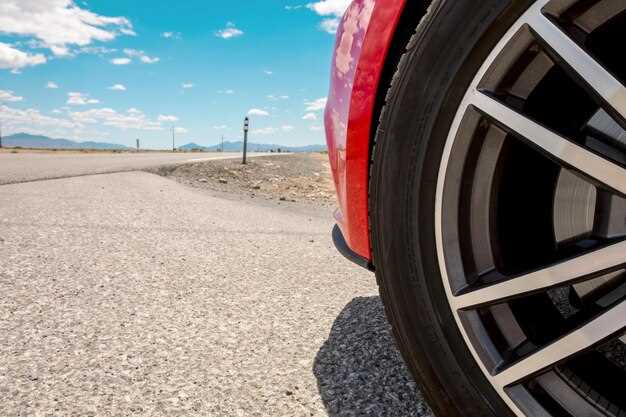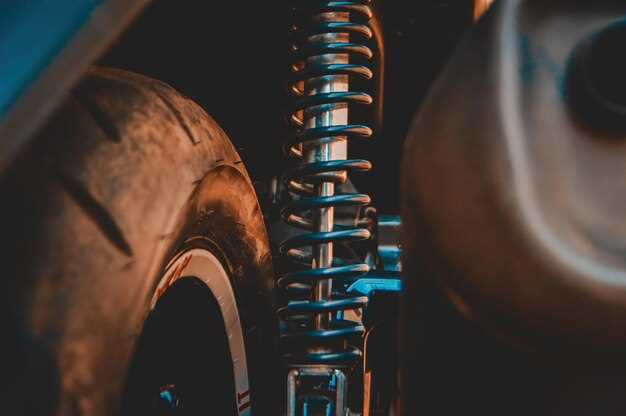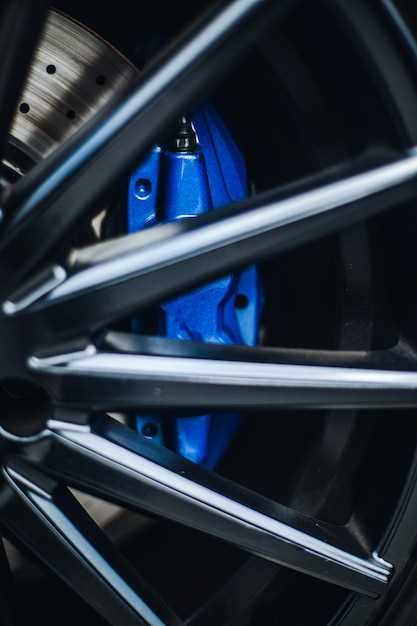
When it comes to enhancing the performance of your vehicle on the track, an optimal suspension setup is crucial. For Corrado enthusiasts, achieving the perfect combination of tuning and suspension can make all the difference in handling, grip, and overall driving experience. A well-executed setup allows for improved cornering capabilities, better weight distribution, and increased stability at high speeds.
Understanding the various components of suspension tuning is essential in achieving a high-performance track setup for your Corrado. From adjusting dampers and spring rates to optimizing sway bar settings, each aspect plays a significant role in the car’s behavior on the circuit. By focusing on these tuning elements, drivers can tailor their vehicles to suit individual driving styles and track conditions, maximizing their potential on race day.
In this article, we will delve deep into the best practices for suspension setup specific to the Corrado. Whether you’re a seasoned racer or a track day novice, these tips will guide you in fine-tuning your suspension system to enhance performance and deliver a competitive edge. Let’s explore the essentials of achieving that optimal balance and responsiveness needed for peak track performance.
Choosing the Right Spring Rates for Your Track Conditions

When setting up your Corrado for optimal track performance, selecting the correct spring rates is crucial. The right spring rates directly affect your car’s handling characteristics, tire contact with the road, and overall stability during a race. This decision should be informed by various factors, including track surface, type of racing, and personal driving style.
Understanding Track Conditions is essential for tuning your suspension. Smooth tracks may allow for stiffer springs, as they provide better feedback and responsiveness. In contrast, bumpy or uneven surfaces often require softer spring rates to absorb shocks and maintain tire contact. Evaluating the specific characteristics of the track you’ll be racing on will guide your initial choices.
Driving Style also influences spring rate selection. Aggressive drivers may prefer stiffer setups that offer precise handling and faster cornering capabilities. Conversely, drivers who favor a smoother ride may benefit from softer springs, allowing for better weight transfer and improved traction. Gauge your driving tendencies and adjust accordingly for the best results.
Weight Distribution is another important factor. Lighter vehicles typically require softer springs to maintain grip, while heavier setups can handle stiffer rates. If you have made modifications that alter the weight of your Corrado, ensure to reassess your spring selection to accommodate these changes.
Ultimately, testing your setup through actual race conditions is vital. Keep track of times and how the vehicle behaves, making adjustments to the spring rates as necessary to find the ideal balance for your specific scenario. With the right tuning of spring rates, you can enhance your vehicle’s performance and tackle the track with confidence.
Adjusting Damper Settings for Improved Cornering Stability
When fine-tuning your suspension setup, damper settings play a crucial role in enhancing cornering stability. Properly adjusted dampers can significantly influence how your vehicle responds to steering input during aggressive cornering scenarios.
Understanding Damping Characteristics
Dampers control the rate at which the suspension compresses and rebounds. They can be adjusted for both compression and rebound settings. Optimizing these settings is essential for maintaining tire contact with the road, minimizing body roll, and ensuring predictable handling.
Compression Settings
Tightening the compression damping can help reduce initial body roll in corners, resulting in a more responsive feel. However, overly stiff compression can lead to a harsh ride and tire skipping over bumps. Start by gradually increasing compression stiffness, testing your setup on a track to find the right balance between stability and comfort.
Rebound Settings
Rebound damping affects how quickly the suspension returns to its original position after compression. Too little rebound can result in a bouncy ride and decreased traction, as the suspension may not settle adequately before the next corner. Conversely, too much rebound can hinder weight transfer, impacting grip. Adjust the rebound settings to ensure the suspension settles quickly but steadily after compression, enhancing overall cornering performance.
Testing and Fine-Tuning
Optimal damper settings depend on various factors including vehicle type, weight distribution, and driving style. It is essential to test different setups consistently. Track testing allows you to gather data on how changes in damping affect cornering behavior. Keep detailed notes and make incremental adjustments to refine your suspension tuning for maximum stability.
In summary, adjusting damper settings is a vital aspect of suspension tuning that can drastically improve cornering stability. By carefully balancing compression and rebound settings, you can achieve a setup that not only enhances performance but also ensures a more enjoyable driving experience.
Aligning Your Wheels: Achieving Precise Camber and Toe Angles
Proper wheel alignment is crucial for optimizing the effectiveness of your Corrado’s suspension setup during a race. Achieving precise camber and toe angles enhances handling, tire wear, and overall performance. Here’s how to effectively tune these settings:
Understanding Camber
Camber refers to the angle of the wheels in relation to the ground. It can be positive, negative, or neutral:
- Negative camber: The top of the wheel leans inward. This is beneficial for cornering performance as it increases the tire’s contact patch during turns.
- Positive camber: The top of the wheel tilts outward, which can degrade handling and is generally less desirable in racing.
- Neutral camber: The wheels are perpendicular to the ground, offering a balance but often sacrificing cornering grip.
Setting the Right Camber
- Begin by measuring the current camber angles using a camber gauge.
- Adjust your suspension components, such as control arms or camber plates, to achieve the desired negative camber, typically between -1.0 to -3.0 degrees for racing setups.
- Recheck the angles after making adjustments to ensure accuracy.
Understanding Toe Angles
Toe describes the alignment of the wheels relative to the centerline of the vehicle:
- Toe-in: The front of the wheels points towards each other, which can improve stability on straight roads.
- Toe-out: The front of the wheels angles away from each other, enhancing responsiveness during cornering.
Optimizing Toe Settings
- Start with a neutral toe alignment to gather baseline data.
- Add slight toe-out (approximately 1/16 to 1/8 inch per side) for improved response in turns during races.
- Monitor tire wear closely; excessive toe-out can lead to rapid degradation.
Final Adjustments
After tuning your camber and toe angles:
- Test your setup on a track to assess handling.
- Collect data on laps times and tire performance.
- Make incremental adjustments as needed to fine-tune your alignment based on feedback.
Accurate camber and toe angles are essential for maximizing your Corrado’s suspension performance on the track. Take the time to adjust and test these settings, as they can lead to significant improvements in handling and speed during racing conditions.
Tire Selection and Pressure Management for Maximum Grip
The right tire selection is crucial for optimizing your Corrado suspension setup on the track. Different tire compounds and tread patterns can significantly influence grip levels, especially when tuning for specific race conditions. Soft compound tires offer superior grip but may wear out quickly, while hard compound tires are more durable but provide less traction. Assess the track surface and environmental conditions to choose the most suitable tires for your race setup.
Managing tire pressure is equally essential for maximizing grip. The correct tire pressure ensures that the tires maintain adequate contact with the road, resulting in improved cornering stability and traction. Generally, lower pressures increase the contact patch, enhancing grip; however, excessively low pressures can lead to tire deformation and decreased response. Conversely, higher pressures can improve steering response but may reduce overall traction. Finding the optimal pressure requires careful tuning and often involves adjustments based on track conditions and tire performance during practice sessions.
Monitor tire temperatures throughout the race to gauge their performance. Ideally, tire temperatures should be consistent across the surface, indicating balanced grip. Front tires may run hotter than rear ones in some setups, which could signal the need for adjustments in tire pressure or suspension tuning. Experiment with different combinations of tire choices and pressure settings to achieve the best setup for your specific racing conditions.
Ultimately, the combination of thoughtful tire selection and precise pressure management will help you attain maximum grip and enhance your overall performance on the track. Regularly reviewing and adjusting these parameters will provide a competitive edge as you strive for optimal results in every race.
Understanding the Impact of Ride Height on Handling Performance
Ride height is a critical aspect of race car setup and directly influences handling performance. It refers to the distance between the ground and a specific point on the vehicle’s chassis, typically measured at the suspension’s lowest point. Adjusting this height can significantly affect several performance parameters, including center of gravity, weight distribution, and aerodynamic efficiency.
A lower ride height generally lowers the center of gravity, which can enhance cornering stability and reduce body roll during sharp turns. This reduction allows for quicker transitions and improved grip, as the vehicle maintains better contact with the track. However, excessively low ride height can lead to issues such as bottoming out, which adversely affects handling and can lead to costly damage. Thus, meticulous tuning is necessary to find an optimal balance.
On the other hand, an increased ride height can provide additional ground clearance, mitigating risks of hitting bumps and curbs. This setup may be advantageous on tracks with uneven surfaces or during uneven terrain racing. However, the trade-off often results in a higher center of gravity, which can compromise stability and cornering performance. Therefore, it’s essential for teams to carefully consider the aerodynamics of their vehicle at different ride heights, as an elevated setup can also negatively impact downforce.
Moreover, ride height plays a crucial role in suspension geometry and alignment. Adjustments in height necessitate recalibrating suspension settings to maintain optimal handling characteristics. This includes camber, toe, and caster angles, all of which work together to define how the tires interact with the track surface. Properly managed, these adjustments can enhance traction and reduce tire wear, benefiting overall race performance.
In conclusion, understanding the relationship between ride height and handling is vital for any race team. Careful consideration and precise tuning of this parameter can elevate a vehicle’s performance, allowing drivers to maximize their potential on the track. Continuous testing and profiling under various conditions are recommended to achieve the ideal setup that aligns with racing objectives.
Testing and Fine-Tuning: Evaluating Your Setup on the Track

After completing your initial suspension setup for your Corrado, it’s crucial to evaluate its performance on the track. Testing is the key to understanding how each adjustment impacts handling, grip, and overall race performance. Begin by gathering baseline data from your setup, focusing on lap times and driver feedback.
During your track sessions, pay attention to how the car behaves in various conditions, such as cornering, braking, and acceleration. Look for signs of understeer or oversteer, as these indicate areas that may require adjustments. Recording your observations will help in identifying patterns that can guide further tuning.
Consider using a telemetry system to collect detailed information, such as suspension travel, g-forces, and tire temperatures. This data will provide insights that are crucial for fine-tuning your suspension setup. Analyze how weight distribution and ride height affect the car’s behavior, particularly during cornering and high-speed sections.
Below is a table outlining key aspects to evaluate during your track testing:
| Aspect | Observation | Recommended Adjustment |
|---|---|---|
| Cornering Stability | Excessive understeer | Increase front roll stiffness |
| Braking Performance | Rear instability during braking | Softening rear damping |
| Overall Grip | Uneven tire wear | Adjust camber settings or tire pressure |
| Ride Comfort | Harshness over bumps | Increase compression damping |
After making adjustments based on your observations, repeat the testing process to gauge the effects of your changes. Track testing is an iterative process; expect to go through multiple sessions to achieve optimal balance and performance. Ultimately, fine-tuning your suspension setup will help you gain a competitive edge in your racing endeavors.










